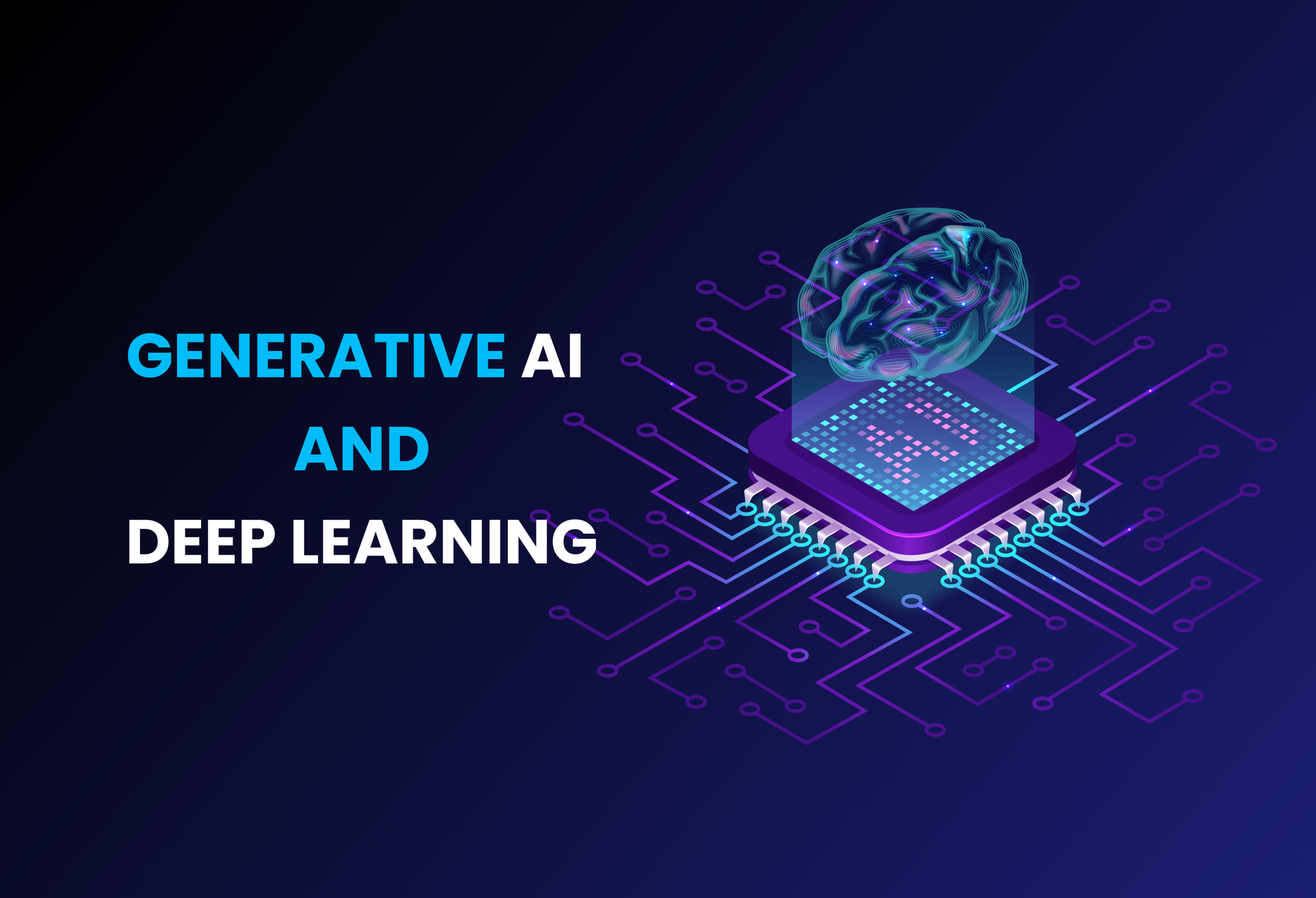Generative AI and Deep Learning
Find out the Mystery of Artificial Creativity
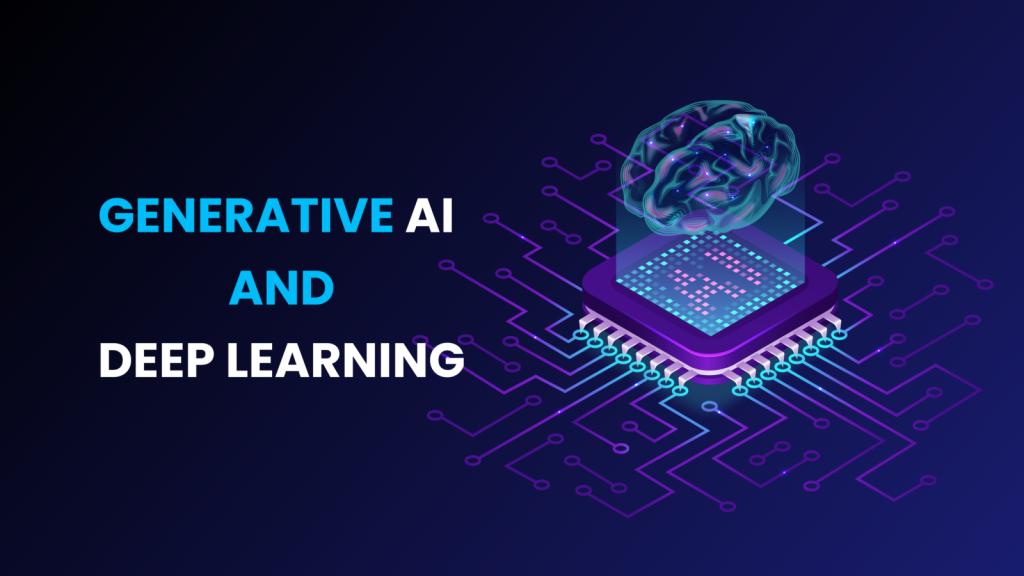
Generative AI and deep learning are trending topics with the arrival of large language models, image generative AIs, and AI music generators on the scene. Most people doubt whether generative AI is a subset of deep learning. Yes! it is! Generative AI is a subset of deep learning while deep learning is a subset of Machine Learning. These developments usher in an exciting future when machines compose symphonies and write books, bringing together the best of both the technological and artistic worlds. This is not an imaginary or futuristic universe. It is the dynamic world of replicating AI. It’s generative AI that questions original thinking and imagination. It levels the playing field between human and machine skill, reviving the future of inventiveness. Further, deep learning exceeds the previous bounds of AI by modeling itself after the mind’s intricate wiring.
These fascinating methods include using expansive linguistic patterns that weave tales like master storytellers and capture the essence of human language. The potential of Generative AI, deep learning, and large-scale language models is limitless, so strap in for a thrilling ride.
What is Generative AI?
Ideas, algorithms, and data all come together in the fascinating topic of generative artificial intelligence. Generative AI is the equivalent of a talented artist producing fresh data samples that mimic the form, content, and semantics of the training data. As the name suggests, this branch of AI focuses on coming up with novel applications of existing knowledge.
The writings produced by these highly sophisticated algorithms don’t have any brand new terms. Instead, they depend on the efficiency of machine learning programs. These algorithms are responsible for producing new text based on the knowledge and patterns they have acquired through their exposure to training material.
It’s like a great composer
Generative AI puts together a linguistic masterpiece like a great composer. It goes back and forth between the simple and the complex, with concepts that are difficult to understand but stimulate the mind. This balance goes to the heart of human creation and makes it difficult to find artificial intelligence.
In the world of generative artificial intelligence, the lines between what is possible and what is not are blurring and inviting us to explore its profound offerings. It is where art and technology meet to help people think of new ideas. Enjoy the wonder of this world, as it has much to offer those willing to go where no one has gone before.
How does Generative AI work?
Are you interested in discovering the inner workings of generative AI? This cutting-edge technology absorbs new data, identifies trends, and generates unique content. Essentially, it’s a simulated AI system that observes, learns, and eventually executes operations independently.
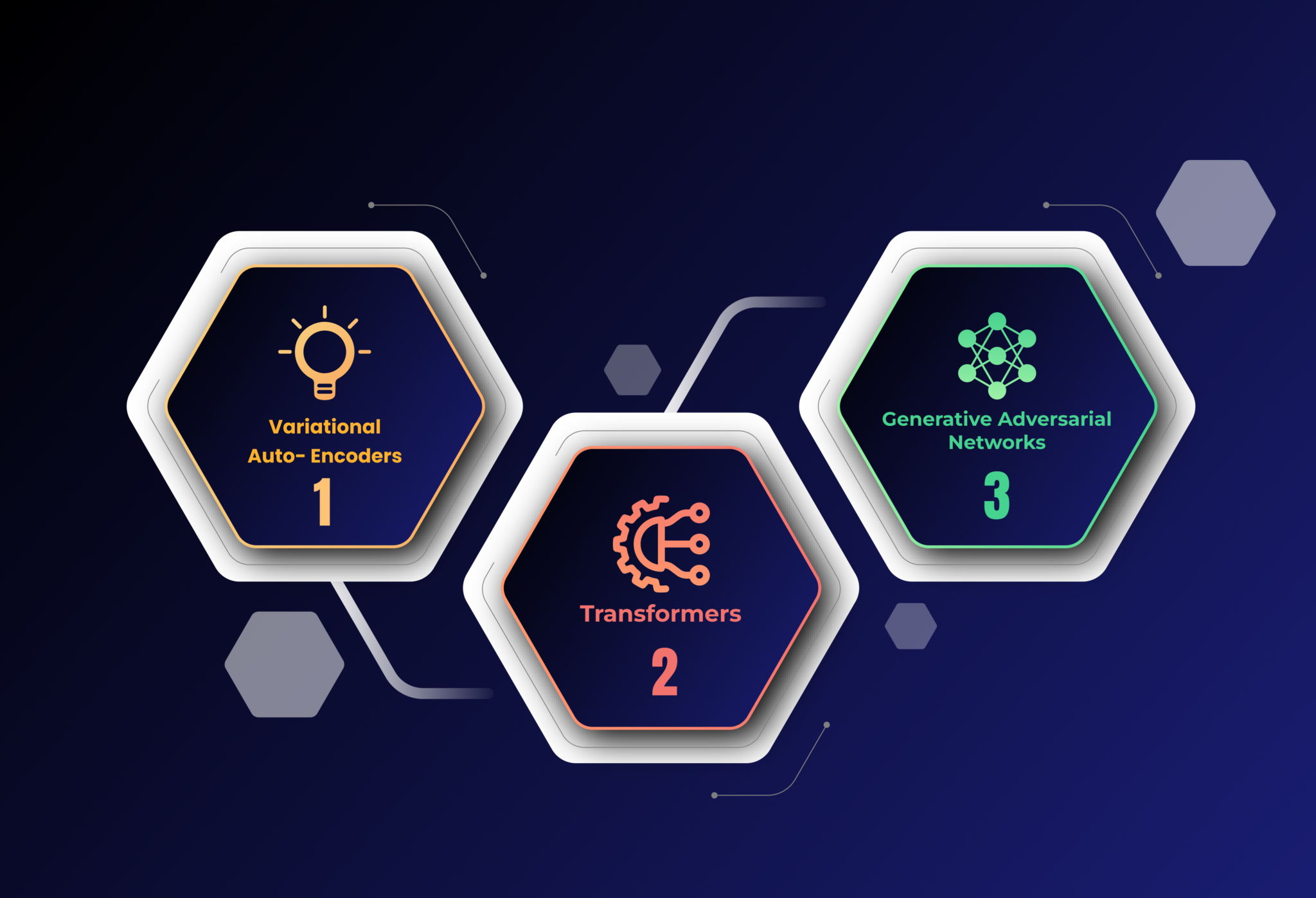
Generative AI Model Types
The interesting variety of model types, each with its own set of skills, is made possible by the broad and ever-evolving field of generative AI. There are several types of generative AI such as generative adversarial networks, variable automatic encoders. Generative adversarial networks (GANs) are a famous example because of their innovative nature and exceptional capacity to generate very lifelike visuals that may captivate the viewer.
As the landscape broadens to include the astounding potential of Variable Automatic Encoders (VAE), these incredible inventions are merely the tip of the iceberg. VAEs are limitless in their creative potential, enabling anything from delicately sculpted facial features to soulful musical compositions.
As we learn more about Generative AI, we see that the possibilities for novel research and ground-breaking advancement are almost endless, waiting only for the most daring and inquisitive minds to seize them.
How can we apply Generative AI?
Generative AI can be used in many different ways, influencing and changing the creative landscapes of many different companies. Get ready for a journey into the world of possibilities opened up by this amazing technology. Get ready to see how it changes things as you move into the world of fine art, creating images that look so real that they blur the line between reality and fantasy.
Watch in awe as it composes symphonies that tug at your heartstrings and writes melodies that go deep into your soul.
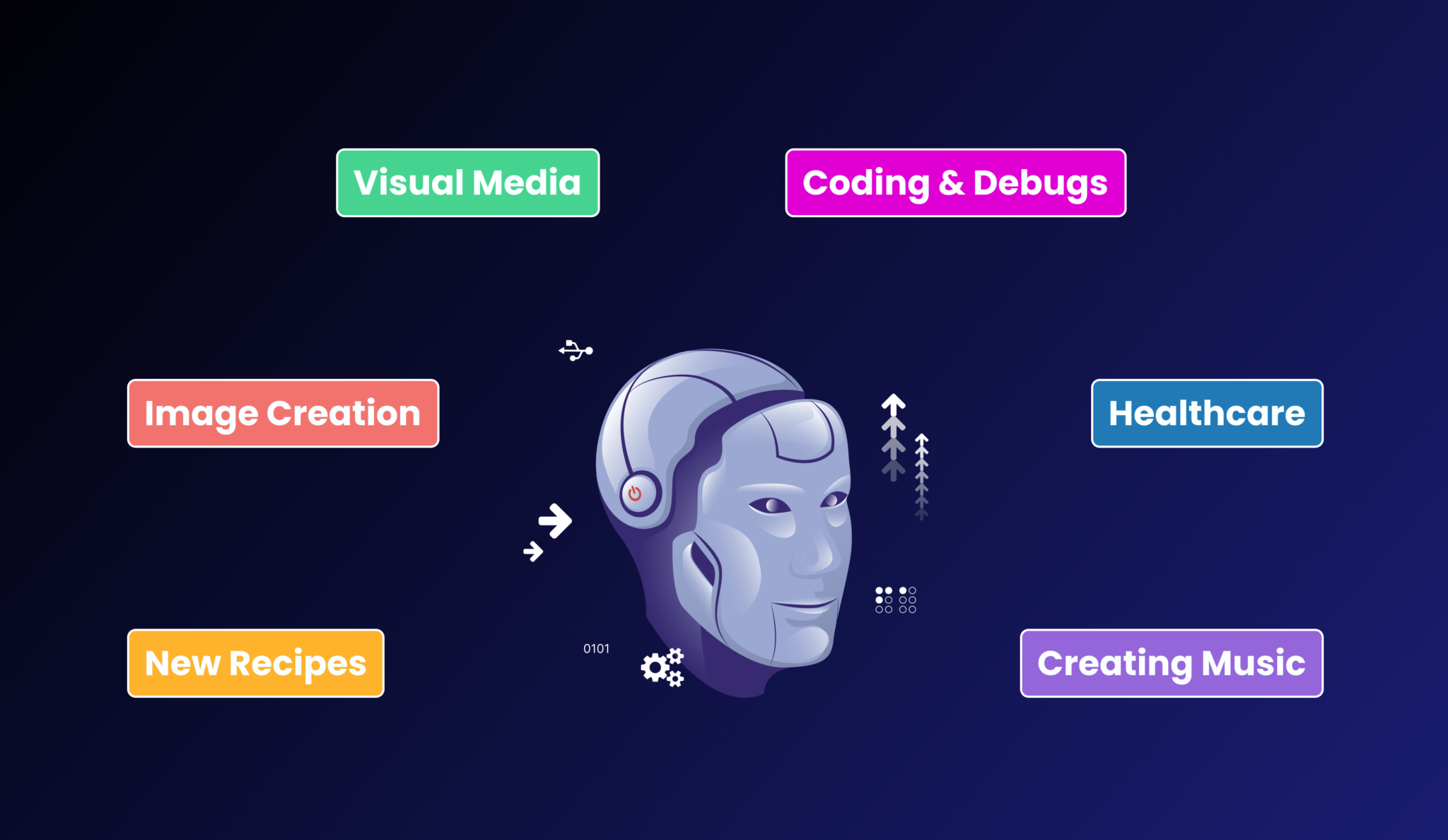
Listen in wonder as it brings the words to life, putting them together as they are spoken in human language. And when it comes to writing, get ready to rock as Generative AI weaves stories and composes eloquent text that takes you on unforgettable journeys through familiar and strange worlds. Generative AI is so vast that its reach extends across borders and into many creative fields.
Applications of Generative AI has also transformed many industries, giving artists, designers, singers, and writers the tools they need to push the boundaries of their work. When art and cutting-edge technology meet, a new era of creation begins, powered by the infinite possibilities of generative artificial intelligence.
What is deep Learning?
Deep learning is an interesting field of machine learning that takes its cues from the complex wiring of brain. Algorithms and neural networks show intricate patterns and provide new insights into this exciting area of study. As an example of our quest for computer intelligence, deep learning attempts to mimic human intellect in machines.
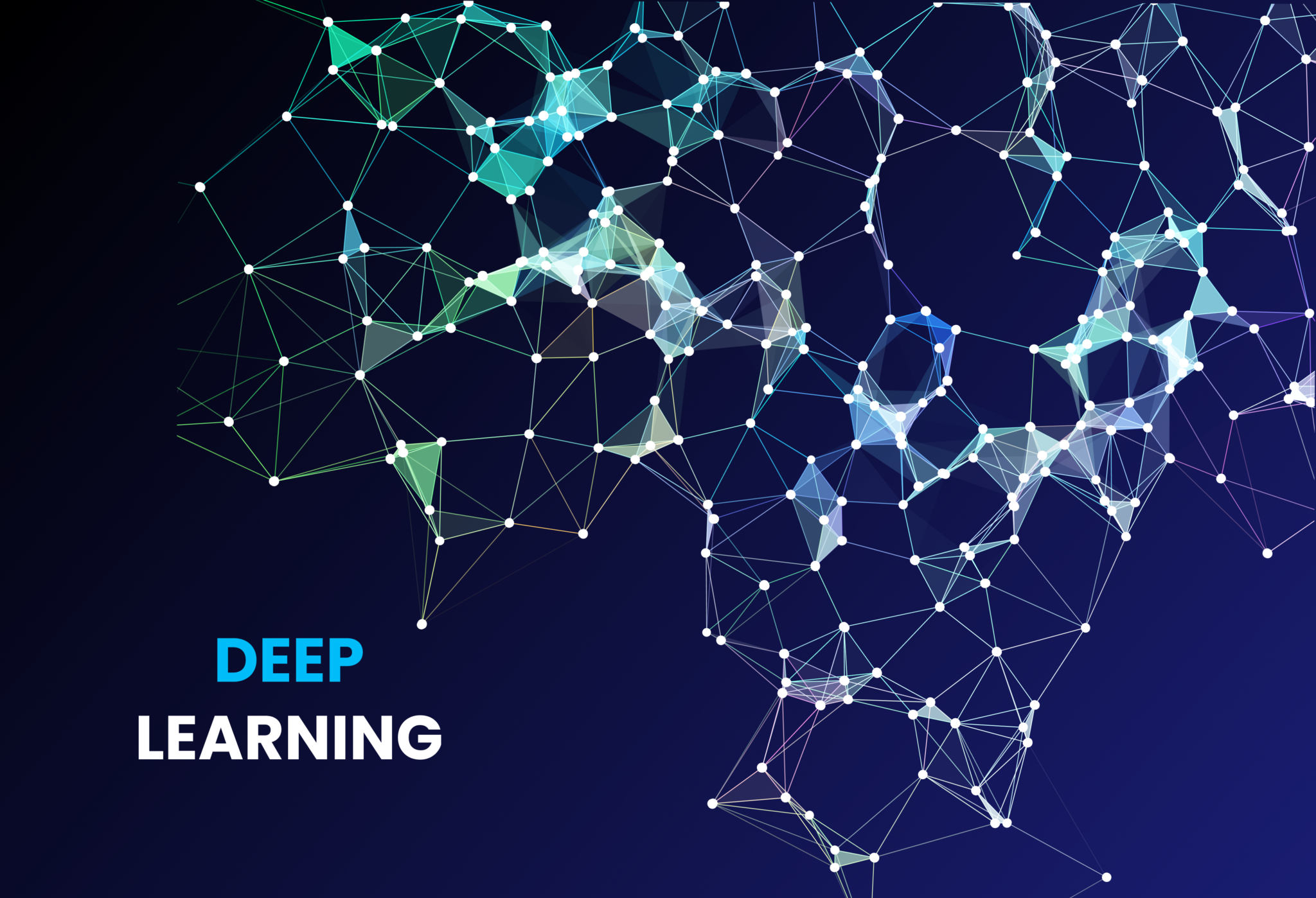
Artificial intelligence will continue to advance thanks to deep learning. The architecture of neural networks is complex, much like that of the human brain. Using several layers of linked nodes, deep learning models can analyze vast quantities of data and discover intricate patterns that a person may overlook. Industries are disrupted, and technology is advanced.
What does deep learning help us with?
Computer vision, NLP, voice recognition, autonomous vehicles, healthcare, and finance are all impacted by deep learning. It aids our efforts to learn new things, make sense of large volumes of data, and comprehend the world around us.
The applications of deep learning are, as we have seen, almost endless. With each iteration, our understanding of the universe and our access to tools increase, opening the door to limitless invention and development. The promise of deep learning motivates academics and technologists to push the boundaries of their fields.
Deep learning also demonstrates the inventiveness and curiosity of the human spirit. The convergence of science, technology, and inquisitiveness is really astounding, and it promises to one day yield machines with human-level intellect and understanding. Every day, deep learning updates AI and forces us to reevaluate our assumptions.
Deep Learning and the Role of Artificial Neural Networks
Deep learning is an incredible field of computer science because of the remarkable architecture of artificial neural networks. Think of the neural network in your brain as a massive, intricate web where every node is linked to every other node.
Each node, like a neuron, patiently waits for its turn to receive data, analyze it with incredible computational prowess, and transmit the results to the next node. This intricate web of connections and fascinating tango of data movement enables deep learning models to become adept at identifying patterns of great complexity and variety.
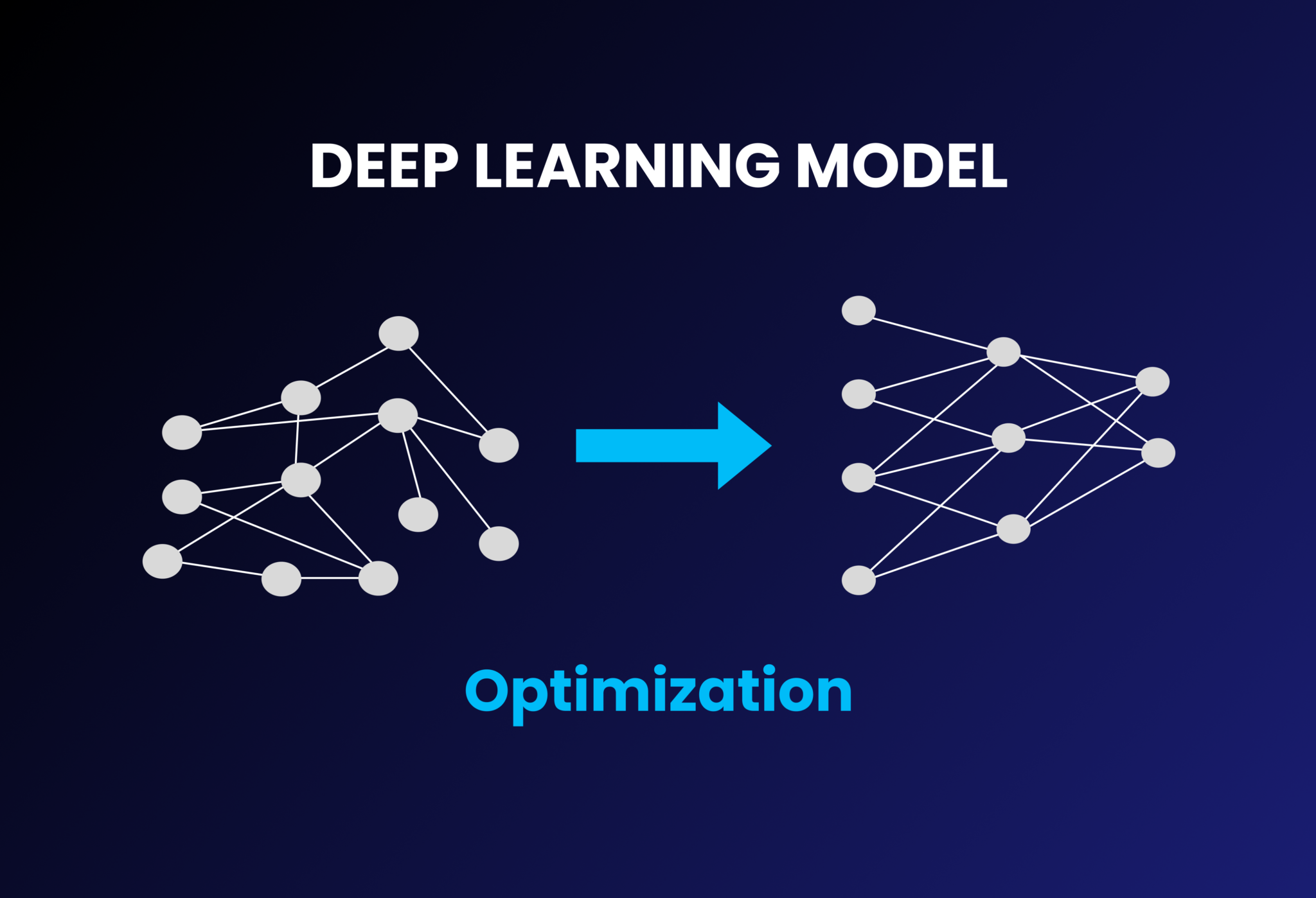
Explaining deep learning further
Let’s dive further into the intriguing world of deep learning and its underlying neural networks. Imagine a massive network of interconnected nodes, each of which has its own unique set of computing skills that it adds to the system as a whole. As data passes through this massive network, complex layers of information are unwrapped, and hidden gems of knowledge are unearthed via a symphony of calculations.
Like a digital approximation of the incredible flexibility of the human brain, the neural network evolves over time as its nodes adapt to and absorb new information.
Deep learning models
Models trained with deep learning have the unprecedented ability to understand the intricacies of complex patterns because of the resilience of their underlying artificial neural network architecture. They harness the potential of many linked nodes to unravel the riddles contained in large datasets. As fearless explorers, they brave the informational labyrinths in search of patterns and insights that are beyond the comprehension of humans.
In addition to mimicking the intricate workings of the human brain, this intriguing dance of linked nodes also ushers in a new age of unprecedented computing advancement. Deep learning models have revolutionized many fields. These vary from computer vision and natural language processing to voice recognition and recommendation systems. As a result of their ability to process massive amounts of data and extract useful information, they have also paved the way to new realms of innovation and discovery.
So, before we go headfirst into the fascinating realm of deep learning and artificial neural networks, let’s take a breath and marvel at the richness of this computational tapestry. It’s proof that humans can be creative, paving the way for innovations that have had far-reaching effects on the state of technology. Creative brains and state-of-the-art algorithms have worked together to push deep learning forward.
Generative AI Subset: Large Language Models
Large language models are an attractive subset of the study of generative artificial intelligence. Chat GPT is a perfect example for Large Language Models. The text generated from these templates captures the very essence of human expression. They are like master storytellers who can captivate and engage with only one sentence. Words that seem to flow effortlessly from the eloquence of a trained wordsmith are really based on patterns the writer has learned over time.
Amazing progress in the area of artificial intelligence is reflected in state-of-the-art language models like GPT-3. Their algorithms labor endlessly in the background to generate text that represents our own thoughts and ideas, and they are refined to replicate the depth and complexity of human interaction. They are also masters of the written word, and the tales, insights, and inspiration they leave behind in their works of art are a testament to that.
The constraints of our three-dimensional planet do not limit this AI checkout service in any way. They transport us over time and space and into other realities. They inspire us to feel, think, and dream with every stroke of the keyboard. Moreover, they are geniuses of the English language, able to weave together facts and imagination into a seamless composition.
The impact of language models
We cannot overstate the significance of huge language models in many areas. There is no limit to their adaptability. They can aid in everything from content creation and distribution to language translation and NLP. They provide a wealth of knowledge and ideas for authors, researchers, teachers, and other professionals, making them a useful resource.
Let’s celebrate the enormous potential of these AI storytellers as we marvel at their inventiveness. They work alongside us to help us learn and express ourselves. And they show us the way to a future where the distinction between human and computer creation is less clear. Every second, they also learn and improve, inching closer to the level of sophistication of language produced by a genuinely indiscernible AI.
The Incredible Applications of Generative AI and Deep Learning Combination
The combination of Generative AI and Deep Learning offers numerous innovative applications, transforming industries by autonomously generating content and models. This convergence of technologies has significant implications for image generation, with tools such as the OpenAI photo generator producing visually appealing images. In text and code generation, ChatGPT stands out for producing coherent text and supporting multimedia content creation. AI music generators analyze music data to compose original pieces, illustrating the future of music production. For developers, AI-powered code-generating tools like Devin AI enhance efficiency by suggesting code snippets and detecting bugs.
From generating images and music to assisting developers in writing code, these technologies are reshaping what is possible with AI. As these technologies continue to evolve, we can expect even more groundbreaking applications that will revolutionize creative and technical processes.
Wrapping Up
The creative abilities of generative AI and the computational capacity of deep learning are blurring the line between human intellect and machine thinking. To this extraordinary convergence, great language models attest, displaying the linguistic beauty of their models and establishing themselves as vital tools in many domains. As we make our way through this complicated environment, we marvel at the intelligence of artificial neural networks, the strength of generative models, and the narrative prowess of enormous language models.
The infinite potential of artificial intelligence will continue to push the limits of human creativity and understanding. And this remarkable synthesis of art, science, and technology is a sign that guides us in that direction.

